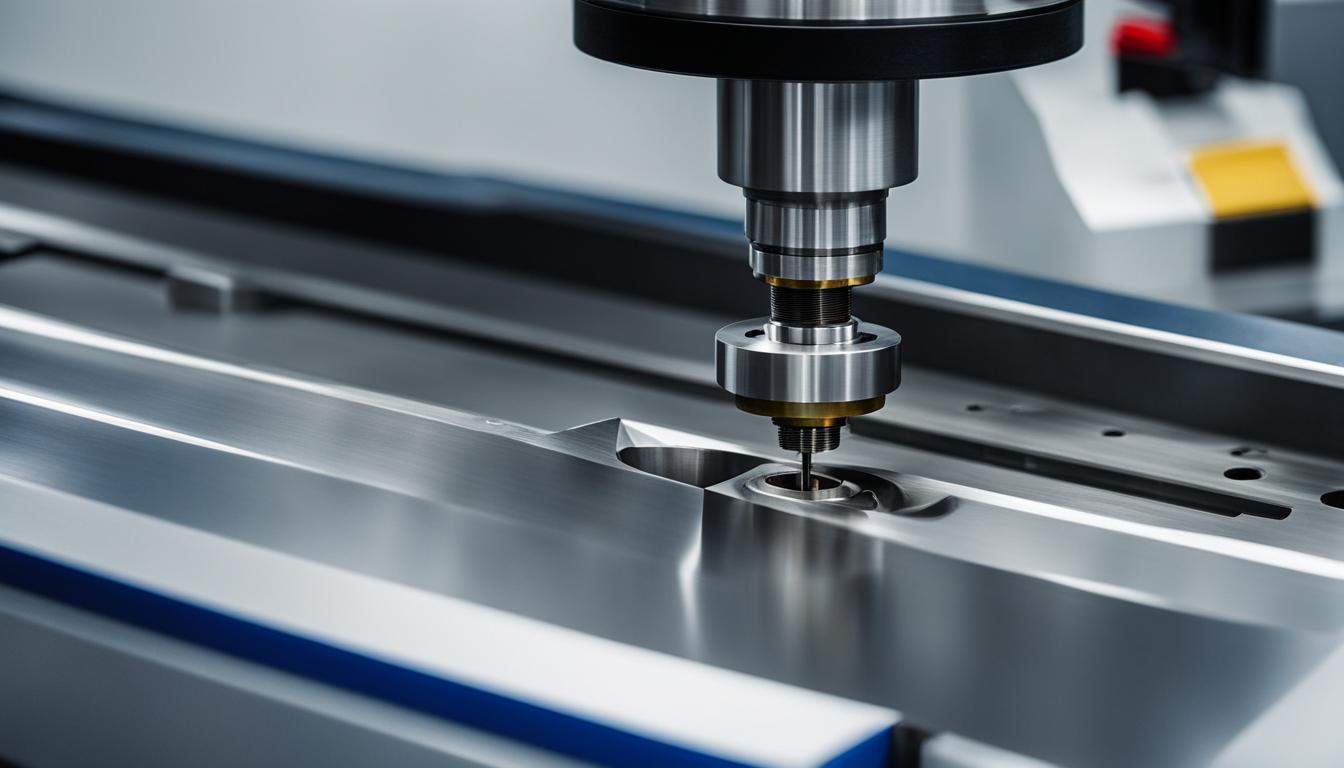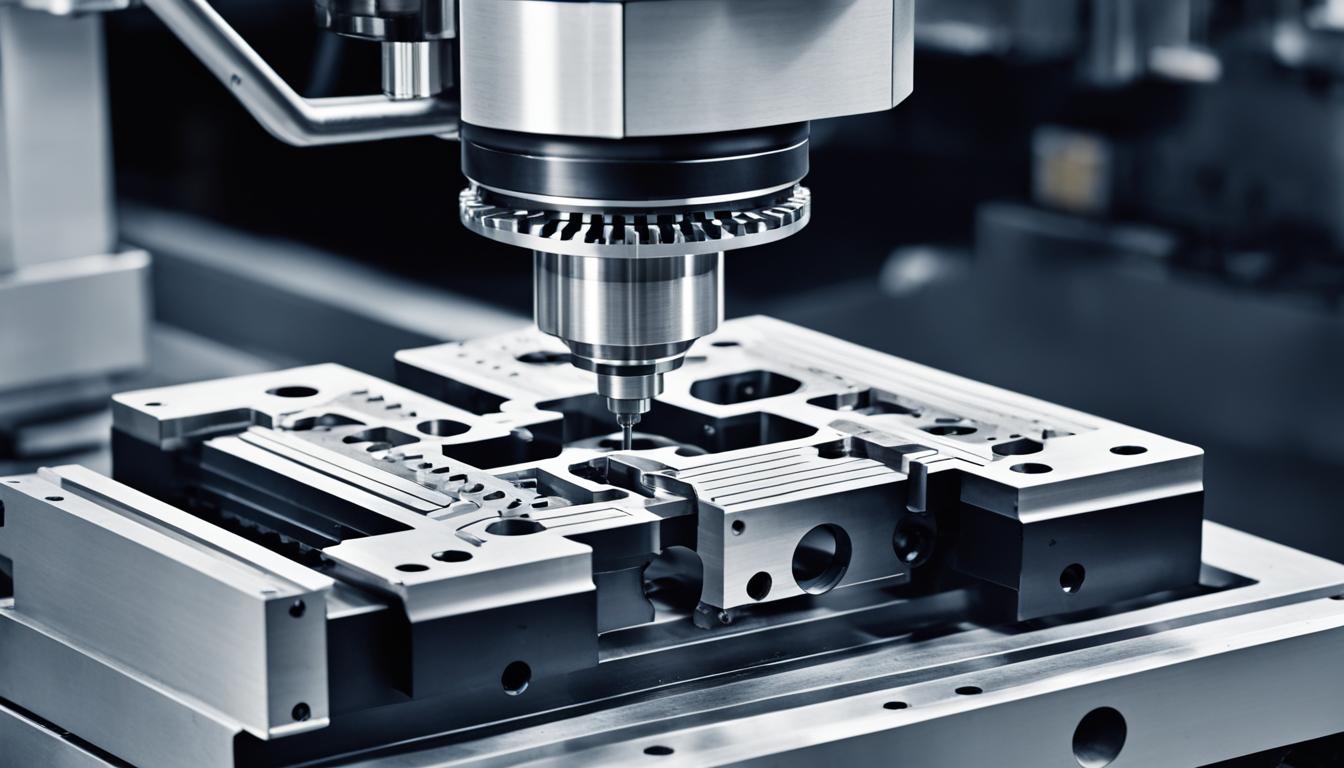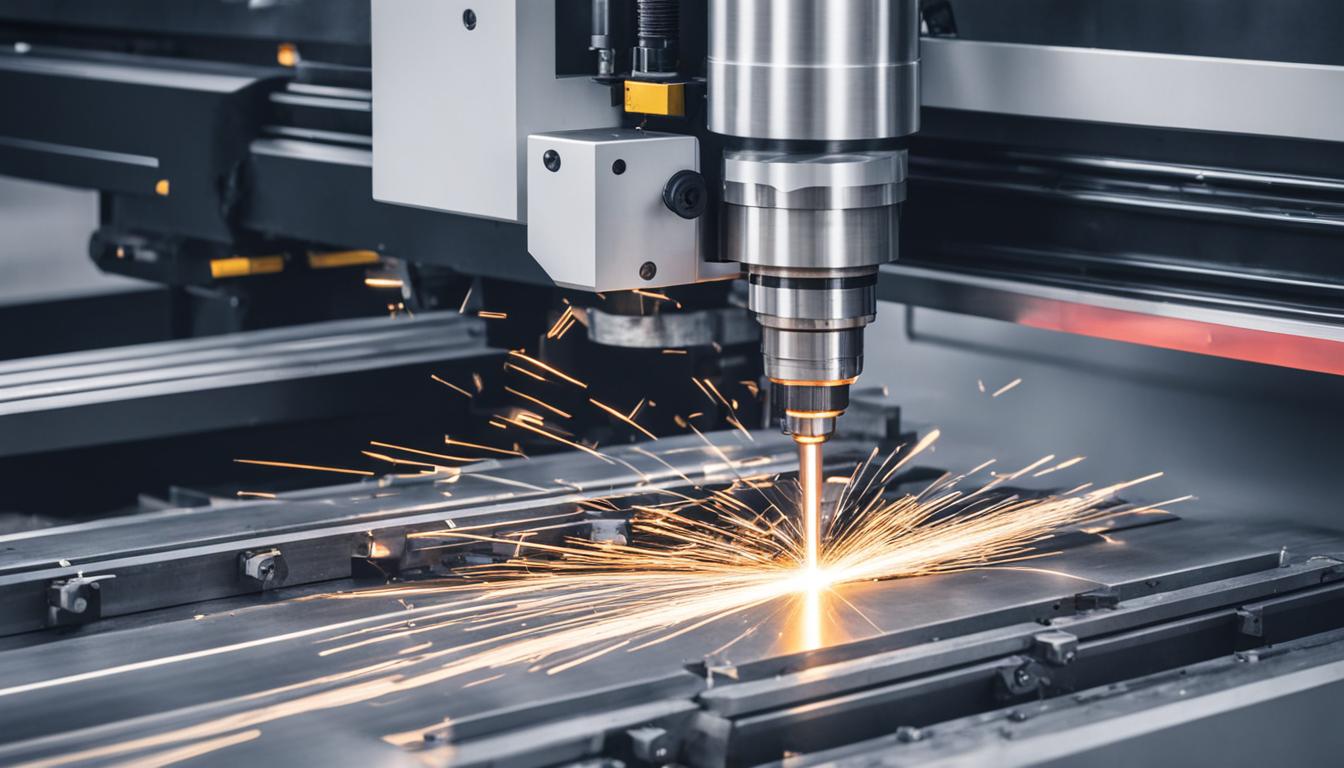CNC machining operations encompass a wide range of processes that utilize computer-controlled machinery to create precise parts and components. These operations include milling, turning, drilling, and grinding, each with its own unique characteristics and applications. Milling involves using rotating cutting tools to remove material from a workpiece, allowing for the creation of complex 3D shapes and surfaces. Turning, on the other hand, involves rotating the workpiece against a stationary cutting tool to produce cylindrical parts. Drilling is used to create holes of various sizes and depths, while grinding employs abrasive wheels to achieve extremely smooth finishes and tight tolerances.
CNC machining operations are characterized by their high accuracy, repeatability, and efficiency, making them ideal for producing large quantities of identical parts or creating intricate, custom components. The use of computer-controlled systems allows for precise control over tool paths, cutting speeds, and feed rates, resulting in superior surface finishes and dimensional accuracy compared to manual machining methods. Additionally, CNC machining offers the flexibility to work with a wide range of materials, including metals, plastics, and composites, making it a versatile solution for various industries such as aerospace, automotive, and medical device manufacturing.
The CNC Machining Process
The CNC machining process involves several steps to achieve precise and efficient material removal. Let’s take a closer look at each stage:
- Part Analysis: The process begins with analyzing the part drawing to understand the geometry and material of the workpiece. This information is crucial for determining the machining strategy.
- Machining Determination: Once the part analysis is complete, the content of the machining and the machining route are determined. This includes selecting the appropriate cutting tools, deciding on the cutting parameters, and planning the optimal machining sequence.
- Numerical Calculations: Numerical calculations are performed to determine the coordinate values for the base point and nodes. These calculations enable the CNC controller to accurately position the cutting tool during the machining process.
- Programming: The next step is to create a program list based on the selected tools and the determined machining strategy. The program list contains instructions that the CNC machine will follow to machine the workpiece.
- Verification: Before the machining process begins, the programming is verified through simulation. This step helps identify any potential errors or issues in the program, ensuring that the final machining operation will proceed smoothly.
- Processing: Once the program is verified, the CNC machine tool starts the machining process. It follows the instructions in the program list to precisely remove material from the workpiece and shape it according to the desired design.
- Quality Control: After the processing stage, the machined workpiece is inspected to ensure that it meets the required quality standards. Any errors or defects are analyzed to identify potential improvements in the machining process.
The CNC machining process is a complex and meticulous operation that requires expertise in CNC programming, cutter location point calculation, and tool selection. By carefully following these steps, manufacturers can achieve high-quality precision parts that meet the specifications of their customers.
Materials Used in CNC Machining
CNC machines are capable of working with a wide range of materials, allowing for versatility and flexibility in the manufacturing process. The choice of material depends on the specific requirements of the application and the desired characteristics of the final product.
One of the most commonly used materials in CNC machining is metal. Metals such as free-machining brass and nickel superalloys like Inconel are popular choices due to their excellent strength, durability, and heat resistance. These materials are commonly used in industries such as aerospace, automotive, and medical.
In addition to metal, CNC machines can also work with plastic materials. ABS, nylon, and polycarbonate are frequently machined plastics that offer a wide range of properties such as high impact resistance, chemical resistance, and low friction. These materials find applications in industries such as electronics, consumer goods, and automotive.
Wood is another material commonly used in CNC machining, particularly for decorative purposes. CNC machines can carve intricate designs and create smooth finishes on wooden surfaces, making it ideal for furniture, ornamental pieces, and architectural applications.
For packaging applications, foam materials are often machined using CNC technology. Foam provides excellent cushioning and protection, making it suitable for packaging fragile items. CNC machining allows for precise shaping and cutting of foam materials to create custom packaging solutions.
Additionally, CNC machines are capable of handling composite materials such as aramid, fiberglass, and carbon fiber. These materials offer high strength-to-weight ratios and are commonly used in the aerospace and marine industries for components that require both strength and lightweight properties.
Summary of Materials Used in CNC Machining:
| Material | Properties | Applications |
|---|---|---|
| Metal (e.g., free-machining brass, nickel superalloys) | Strength, durability, heat resistance | Aerospace, automotive, medical |
| Plastic (e.g., ABS, nylon, polycarbonate) | High impact resistance, chemical resistance, low friction | Electronics, consumer goods, automotive |
| Wood | Decorative, smooth finishes | Furniture, ornamental pieces, architecture |
| Foam | Cushioning, protection | Packaging |
| Composite materials (e.g., aramid, fiberglass, carbon fiber) | High strength-to-weight ratio | Aerospace, marine |
In conclusion, CNC machining offers the ability to work with a wide range of materials, allowing for the production of diverse and complex parts across various industries. The choice of material depends on factors such as strength requirements, desired properties, and intended applications.
Applications of CNC Machining
CNC machining, with its precision and versatility, finds extensive applications in various industries. Let’s explore some of the key applications of CNC machining:
Woodworking Industry
In the woodworking industry, CNC machining is widely used to create furniture with intricate designs and complex geometries. CNC machines are capable of carving, cutting, and shaping wood materials with high precision, resulting in finely crafted furniture pieces.
Lettering and Engraving Systems
CNC machining is commonly employed in lettering and engraving systems, both for artistic purposes and serial marking. It allows for precise and consistent engraving of letters, numbers, logos, and intricate designs on various materials such as metal, plastic, and wood.
Electrical Industry
In the electrical industry, CNC machining plays a crucial role in manufacturing printed circuit boards (PCBs). CNC machines are used to accurately drill mounting holes for electronic components, ensuring the precise alignment and functionality of the finished PCBs.
Pharmaceutical Industry
In the pharmaceutical industry, CNC machines are utilized to manufacture equipment with high precision and quality standards. These machines can produce intricate components and parts for pharmaceutical production processes, ensuring consistency and accuracy in drug manufacturing.
Food and Beverage Industry
CNC machining is widely employed in the food and beverage industry for various applications. It is used to manufacture custom material-handling machinery, ensuring efficient handling and processing of food products. CNC machines are also utilized in the production of injection molded plastics for food packaging, ensuring the adherence to strict hygiene and safety standards.

Advantages of CNC Machining
CNC machining offers several advantages that make it a preferred choice in various industries. Here are some of the key benefits:
Precision and Quality
CNC machining allows for the production of highly precise parts with consistent quality. The use of computer control technology ensures accurate measurements and precise cutting, resulting in parts that meet tight tolerances and strict quality requirements.
Automation and 24/7 Production
One of the major advantages of CNC machining is its automated nature. Once the CNC program is set up, the machine can operate continuously, 24/7, with minimal human intervention required for loading and unloading materials. This allows for increased productivity and efficiency, as the machine can run uninterrupted for extended periods of time.
Faster Production
CNC machining enables faster production compared to manual machining processes. With the use of computer control technology and predefined programs, CNC machines can execute machining operations quickly and accurately. This reduces the risks of human error, increases efficiency, and ensures faster turnaround times for projects.
Reduced Labor Costs
Thanks to automation, CNC machining reduces the reliance on manual labor. This not only minimizes the need for a large workforce but also eliminates the risk of human error during machining operations. As a result, businesses can save on labor costs and allocate resources more efficiently.
Wide Range of Materials
CNC machining can work with a wide range of materials, including metals, plastics, wood, and composites. This versatility allows manufacturers to choose the most suitable material for their specific requirements and produce high-quality parts from various materials.
Flexibility and Customization
CNC machines offer great flexibility and customization capabilities. With the ability to program and control the machining process, manufacturers can easily adapt to design changes, create complex geometries, and produce customized parts according to specific requirements.
Overall, CNC machining provides numerous advantages in terms of precision, automation, efficiency, and flexibility, making it an indispensable technology in modern manufacturing.
Limitations of CNC Machining
While CNC machining offers numerous advantages, it also has its limitations. Understanding these limitations is crucial for making informed decisions about utilizing CNC machining in various applications. The following are the key limitations of CNC machining:
- Specialized Skills and Training: Operating and programming CNC machines requires specialized skills and expertise. This can be costly, both in terms of time and resources, to acquire and maintain the necessary knowledge.
- High Initial Investment: CNC machines are expensive investments. The cost must be carefully considered based on the workload and potential payback period to ensure a viable return on investment.
- Material Constraints: CNC machining has limitations in terms of the materials it can effectively handle. While it is commonly used for metals, plastics, wood, and composites, certain materials may pose challenges due to their properties or compatibility with CNC processes.
- Feature Complexity: The complexity of the features that CNC machining can produce is also limited. Extremely intricate designs or geometries may be difficult or even impossible to achieve using CNC machines.
- Scalability Challenges: Scaling up production with CNC machining can be challenging, especially for high-volume requirements. The time and cost per part may not be optimized for large-scale production compared to alternative manufacturing methods.
To overcome these limitations, it is important to carefully assess the specific requirements of each project and consider alternative manufacturing processes if necessary. By understanding the limitations of CNC machining, businesses can make informed decisions and leverage its benefits effectively.

| Limitations | Description |
|---|---|
| Specialized Skills and Training | CNC machining requires specialized skills and training for operation and programming. |
| High Initial Investment | CNC machines are expensive, requiring careful consideration of cost and return on investment. |
| Material Constraints | CNC machining has limitations in handling certain materials effectively. |
| Feature Complexity | Complex design features may be challenging to produce using CNC machining. |
| Scalability Challenges | Scaling up production with CNC machining can be difficult for high-volume requirements. |
Cost of CNC Machining
The cost of CNC machining a part is influenced by several factors that contribute to the overall expenses. Understanding these cost factors is essential for budgeting and optimizing the manufacturing process.
1. Material
The choice of material significantly impacts the cost of CNC machining. Some materials, such as exotic metals or high-performance plastics, can be more expensive than standard options. Additionally, certain materials may require specialized tooling or machining parameters, further increasing the cost.
2. Complexity of the Part
The complexity of the part being machined plays a crucial role in determining the cost. Parts with intricate designs or complex features require additional machining operations, which can increase production time and labor costs.
3. Tolerances and Surface Finish
The required tolerances and surface finish also affect the cost of CNC machining. Tighter tolerances and high-quality surface finishes often require more precise machining processes, specialized tools, and additional time, leading to higher costs.
4. Quantity of Parts
The quantity of parts being produced affects the cost per unit. Low-volume production runs typically have higher costs per part due to the overhead expenses associated with setup and tooling. Conversely, large-volume production runs benefit from economies of scale, reducing the cost per part.
By considering these factors and optimizing the machining process, manufacturers can better estimate and control the cost of CNC machining to ensure cost efficiency and high-quality results.
Sample Cost Comparison Table:
| Material | Complexity | Tolerances and Surface Finish | Quantity | Cost |
|---|---|---|---|---|
| Aluminum | Low | Standard | 10 | $100 |
| Steel | Medium | Precision | 50 | $500 |
| Titanium | High | Ultra-Precision | 100 | $2,000 |
Different Types of CNC Machines
When it comes to CNC machining, there are a variety of machines that cater to different machining processes. Each type of CNC machine has its own set of advantages and applications. Let’s take a closer look at some of these machines:
CNC Milling Machines
CNC milling machines are widely used and can perform 3-axis or more milling operations. They are capable of machining a wide range of materials with high precision. CNC milling machines are versatile and commonly used in industries such as automotive, aerospace, and medical.
CNC Drilling Machines
If you need to create precise holes in workpieces, CNC drilling machines are the ideal choice. These machines are designed specifically for drilling operations and can accurately position and drill holes in various materials.
CNC Grinding Machines
CNC grinding machines are used for creating smooth-finished parts by removing material with a rotating flat abrasive wheel. They are commonly used in the manufacturing industry for precision grinding operations, delivering high-quality surface finishes.
CNC Routers
CNC routers are similar to milling machines in their operations but differ in the setup. In CNC routers, the workpiece remains stationary while the cutting tool moves across it. These machines are widely used in woodworking, sign making, and prototyping applications.
By utilizing these different types of CNC machines, manufacturers can achieve precise and efficient machining for a wide range of applications. Whether it’s milling, drilling, grinding, or routing, CNC machines provide the versatility and accuracy needed to produce high-quality parts.
The History of CNC Machining
In 1949, John Parsons, a visionary engineer, pioneered the concept of controlling machine tools through numerical control at MIT. This breakthrough marked the birth of CNC (Computer Numerical Control) machining, revolutionizing the manufacturing industry.
Building upon Parsons’ work, Richard Kegg further advanced CNC machining in 1952 with the invention of CNC milling machines. These machines allowed for precise and automated material removal, enabling the production of complex parts with unprecedented speed and accuracy.
Early CNC machining processes relied on punched tape as a means of automation. However, with the advent of digital computing in the 1960s, computerized controls replaced the cumbersome punched tape system. This transition ushered in a new era of CNC machining, characterized by enhanced programming capabilities and increased efficiency.
Important Milestones in the History of CNC Machining
- 1949: John Parsons develops numerical control for machine tools
- 1952: Richard Kegg invents CNC milling machines
- 1960s: Introduction of computerized controls
Today, CNC machining has become a fundamental manufacturing process, revolutionizing industries such as aerospace, automotive, electronics, and more. It continues to evolve, with advanced technologies like 5-axis machining and multi-axis programming pushing the boundaries of what is achievable in terms of precision and complexity.
| Year | Development |
|---|---|
| 1949 | John Parsons develops numerical control |
| 1952 | Richard Kegg invents CNC milling machines |
| 1960s | Introduction of computerized controls |
How CNC Machining Works
CNC machining is a highly precise and efficient process that relies on computer programs to control the movement of machine tools. The first step in the process is creating a Computer-Aided Design (CAD) model of the desired part. This model serves as the blueprint for the machining operation.
Once the CAD model is created, it is converted into a CNC file, which contains the instructions for the CNC machine to follow. These instructions include details such as tooling paths, cutting parameters, and tool selections. The CNC file is then loaded into the CNC machine.
Before the machining operation can begin, the CNC machine is set up. This involves positioning the workpiece on the machine’s worktable and loading the necessary cutting tools into the tool magazine. The machine is also calibrated to ensure accuracy and precision.
Once everything is configured, the CNC machine executes the machining operation based on the instructions in the CNC file. The machine moves the cutting tools in the specified paths, removing material from the workpiece to create the desired shape and dimensions. During the process, the machine follows a set of commands called G-codes and M-codes, which control movement and perform various functions such as tool changes and coolant control.
